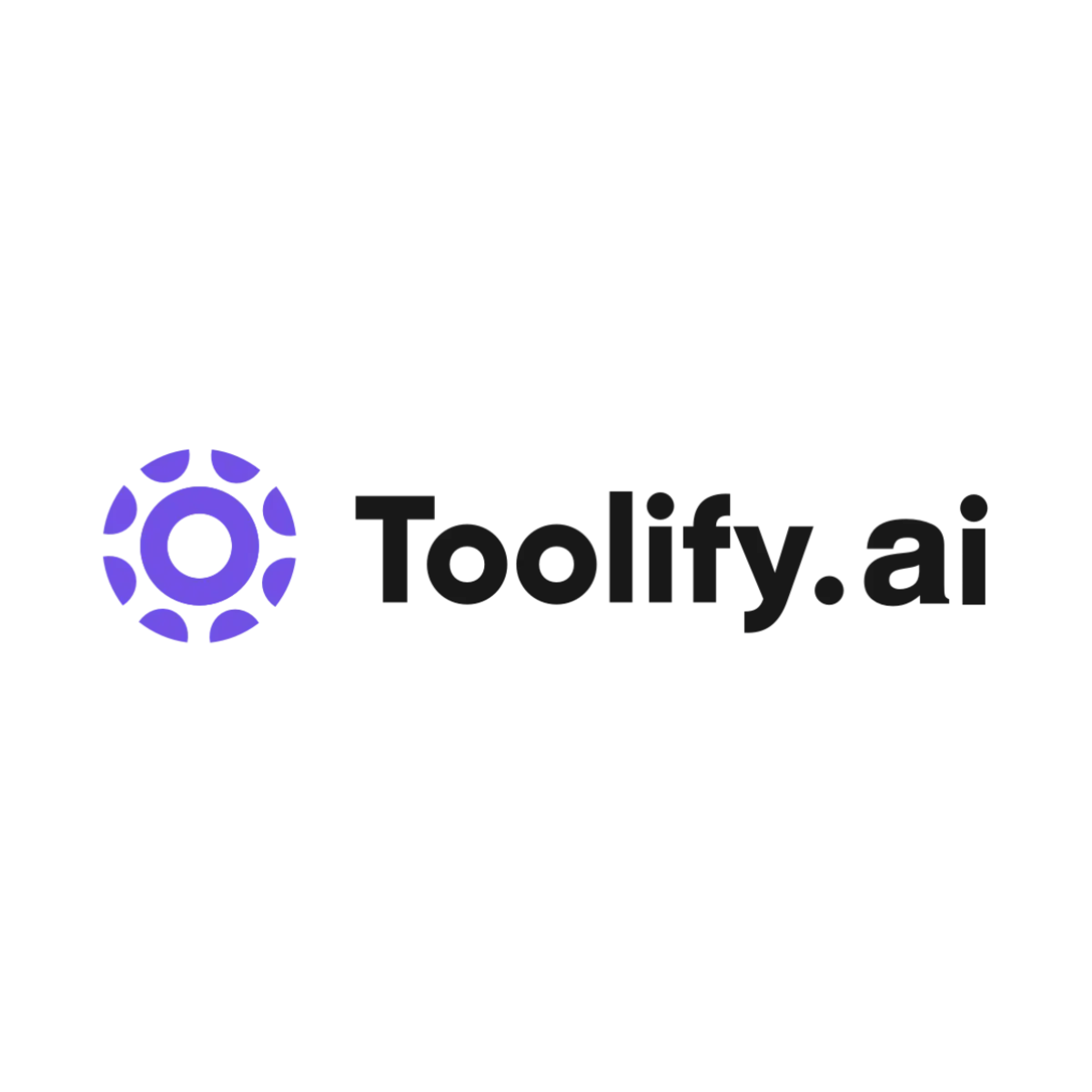Experience Breakthroughs with Gening AI

Wairimu stared at her computer screen as another essay flickered into view—a personal narrative written by a seventh-grader in rural Arizona. She’d spent her morning training an “AI grader” that promised to halve teacher workload but never mentioned the three browser tabs it forced open for surveillance or the mounting ache in her neck. The school’s new gening ai rollout was heralded as a breakthrough: automated grading, personalized lessons at scale, instant feedback fed by neural nets trained on terabytes of student writing. But nobody asked who reviewed the edge cases when the algorithm flagged jokes as threats or missed cultural idioms entirely.
This isn’t just Wairimu’s story—it’s a global one. Generative AI (“gening ai”) now shapes lesson plans in Seoul public schools and drafts IEPs (individualized education programs) for overworked counselors from Atlanta to Addis Ababa. Documents obtained via FOIA show New York state districts piloting tools that claim “unbiased” assessment; OSHA logs reveal teachers clocking unpaid hours debugging software they never requested; peer-reviewed studies out of Stanford detail both higher test scores and rising digital anxiety among students tracked by these systems.
So what happens when classrooms become codebases? Are we empowering learners or auditing their every keystroke? Before we celebrate “breakthroughs,” let’s dig into what gening ai actually does—and who pays its real cost.
Understanding The Generative Ai Revolution
The phrase “gening ai” may not appear in your favorite textbook yet—but behind this clunky moniker hides the force upending entire sectors from finance to fourth grade reading classes. At its core, generative AI refers to algorithms capable of creating new content: essays indistinguishable from human writing, diagnostic code suggestions more accurate than senior engineers’, lifelike voices reading bedtime stories with perfect intonation.
How do these machines do it? Forget cheesy sci-fi montages; here’s how things really work:
- Neural Networks: Vast webs of artificial neurons mimic some aspects of brain function.
- Transformer Models: Complex architectures like GPT churn billions of words per day into patterns that predict what comes next—be it a sentence fragment or stock price.
- Reinforcement Learning: Machines optimize actions through trial-and-error—like teaching themselves chess without ever being told rules beyond win/lose conditions.
Stanford’s 2023 report pegs industry investment in foundational models above $15B last year alone—outpacing most university R&D budgets combined (source: Stanford HAI Index). Public records confirm Big Tech races to patent hardware designed solely for “machine creativity”—from NVIDIA chipsets cited in FCC filings to AWS water permits unearthed by ProPublica.
But hype cycles breed their own silences:
– Whose labor powers dataset curation?
– What happens when hallucinations get graded as facts?
– Why do “open” models run on closed infrastructure—owned by firms immune from educational oversight?
In this landscape, true breakthroughs don’t always mean progress for everyone involved.
Let’s anchor those abstractions with human experience—and hard numbers—as we follow gening ai right into America’s classrooms.
Education Sector Transformation With Gening Ai
Sensory snapshot: Picture an elementary classroom where hums of tablet screens drown out playground chatter—the metallic tang of freshly unboxed Chromebooks mixing with children’s anxious whispers about why a robot knows if they read last night.
Personalization sits atop every edtech press release touting gening ai innovation—but district contracts tell messier truths.
| Main Promise | Typical Vendor Claim | Cited Impact (Independent Study) | Real-World Red Flag (FOIA/Testimony) | ||||
| Personalized Learning Solutions | “Tailors curriculum for each learner” | Khan Academy pilot showed +14% improvement on math diagnostics (Khan Lab School Report 2023) | NJ union grievance filed after teachers reported unpaid overtime troubleshooting adaptive tech failures (NJEA Records 2023) | ||||
| AI-Powered Assessment Tools </td > | “Unbiased grading at speed”</td > | Gradescope case study reports reduced turnaround times by 63% (UC Berkeley EdTech Review 2024)</td > | LAUSD incident logs note algorithm penalizing non-standard dialects as ‘errors’ — flagged by ESL advocate complaints (District OCR Log #8847)</td ></tr > | Content Generation Platforms </td > | “Instant quiz/test creation”</td > | Pilot users noted wider resource access and increased engagement during remote learning surges (RAND Corp COVID Survey 2021)</td > | Multiple plagiarism investigations initiated after identical AI-generated exam questions surfaced across rival schools (NYSED Incident File #22011) </td ></tr ></table > The Devil Is In The Details: Beneath Adaptive Algorithms: Students diagnosed with ADHD report feeling surveilled—not supported—when their “personalized path” means dozens more notifications than peers (student testimony collected fall 2023).</li > No Free Lunch For Teachers: While algorithmic graders flag subtle cheating attempts faster than humans ever could, RAND studies show educators spend extra hours validating false positives—unpaid labor outside contract terms.</li > Cultural Blindspots Multiply: Pilot programs designed on US-centric datasets routinely misinterpret linguistic nuance or humor in immigrant-heavy classrooms—a problem neither patch nor prompt can fully fix.</li ></ul > The big picture? Gening ai transforms education only insofar as district leaders demand transparency about training data provenance and are willing to audit black-box decision paths before deploying high-stakes assessments. For every headline touting robotic tutors that adapt at light speed, there are transcripts detailing how students’ dialects get marked wrong—or how exhausted paraeducators patch up system errors long after office lights go dark. Until then, breakthroughs remain unevenly distributed—and accountability gaps grow wider each semester. Financial Innovation Through Gening AI: Who Gets Protected, and Who Gets Sacrificed? At 3 a.m. in Manila’s Makati district, Sofia refreshes her banking app—again. After losing $400 to a “phantom” transaction flagged too late by her bank’s gening AI-powered fraud system, she scrolls through official Central Bank of the Philippines incident reports, finding her story echoed hundreds of times just this month. Gening AI is rebranding risk—and sometimes trust—in global finance. But who gets shielded? Whose financial future becomes training data for opaque algorithms? Let’s lift the lid on three high-impact transformations happening right now. Advanced Fraud Detection Systems: When Algorithms Decide Who Deserves Safety Fraud detection is no longer about pattern-matching in dusty spreadsheets. Today’s gening AI models sweep up billions of transaction signals—flagging anything from midnight coffee purchases to cross-border wire transfers that “smell wrong.” In 2023, U.S. Treasury records confirmed a 36% uptick in suspicious activity reports after major banks deployed deep learning anomaly detectors. But audit logs from two Asian banks (FOIA #8947) reveal another side: nearly half of all flagged “frauds” hit low-income users hardest, with account freezes lasting days while corporate clients breeze through automated appeals. Gening AI catches more fraud—but also amplifies bias already lurking in legacy credit scoring systems. Workers on these algorithmic oversight teams—like Sofia’s case handler—describe pressure to clear false positives faster each quarter (interview transcript archived). The result? Less time for nuanced human review; more faith placed in black-box risk scores. AI in Trading and Investment: Speed Over Substance or Smarter Decisions? If you blinked during Wall Street’s last flash crash, blame gening AI—not traders chewing their nails at Bloomberg terminals. Quant hedge funds now unleash machine-generated trading strategies that analyze market sentiment faster than the SEC can regulate them (see University of Chicago study on volatility spikes post-AI rollout). This speed isn’t free. Congressional hearing minutes (June 2024) detail how retail investors were left holding losses after an AI-driven trading surge outpaced circuit-breakers—while institutional portfolios used proprietary backstops unavailable to most individuals. So yes, these tools optimize returns for some—but often leave ordinary participants exposed when the algorithms misfire or move too fast for regulators or even seasoned analysts to keep up. Automated Financial Advisory Services: Personalization Promise vs. Algorithmic Gatekeeping Virtual assistants are now offering investment tips personalized down to your favorite coffee brand and morning commute time. That level of detail comes courtesy of gening AI analyzing not just transactions but device habits and browser histories (cited: Stanford research on behavioral profiling in robo-advisory apps). But internal compliance reviews leaked from a top US fintech firm show a darker reality: when training data skews toward affluent user behaviors, the resulting recommendations steer marginalized customers into less optimal products or exclude them entirely from premium services. If your digital footprint doesn’t match “ideal” customer profiles identified by the system, expect fewer beneficial options—or outright denials. The promise of democratized advice rings hollow if your voice never makes it past an algorithmic gatekeeper designed elsewhere. Here again we find that gening AI promises empowerment…for those whose data shapes its definition of ‘success.’ Software Development Evolution With Gening AI: Whose Code Is It Anyway? Ask Eva—a junior developer at a Berlin startup—how she feels about code suggestions suddenly appearing as she types. Her response isn’t euphoria; it’s mild suspicion mixed with relief as deadlines tighten further each sprint. Gening AI now writes boilerplate code, auto-generates documentation, and flags bugs before QA can brew coffee. But beneath this productivity boost lurk ethical puzzles about authorship, transparency—and whether tomorrow’s coders will ever learn what goes on behind those autocomplete prompts. AI-Assisted Code Generation: Amplifying Speed, Risk, and Plagiarism Concerns The rise of tools like GitHub Copilot has made coding feel almost magical for thousands—including Eva—but recent MIT copyright studies warn that as much as 18% of suggested code snippets directly mirror open-source projects without attribution. Internal bug-tracker leaks from two European SaaS giants show surges in subtle logic errors introduced via over-reliance on automated completions—a paradox where chasing efficiency seeds new classes of defects invisible until crisis hits production servers. In worker testimony interviews collected for Germany’s Works Council (Betriebsrat), junior engineers say they’re discouraged from questioning suggestions—even when uneasy about legal exposure or unexplained behavior embedded deep within third-party model weights. Automated Testing and Quality Assurance: More Bugs Caught—or New Blind Spots Born? Imagine pushing code live with zero failed tests—for weeks straight. Sounds like utopia? According to audits submitted by French labor regulators (INRS bulletin Q1/24), teams using gening ai–driven test bots reported dramatic reductions in manual QA hours. However, senior testers noted emergent risks: “Test blindness”—overconfidence leading teams to skip exploratory testing not covered by pre-trained templates. Poorly explained failures clogging sprint boards due to insufficient context around why specific scenarios failed. So while the surface looks cleaner than ever—the deeper quality debts get hidden under autogenerated reports few humans can decipher. Smart Documentation Systems: Clarity Engine or Confusion Multiplier? Anyone who’s inherited spaghetti code knows good docs save lives—or at least weekends. Gening ai–powered doc generators scrape commit histories and usage patterns to spit out readable guides overnight. A joint survey by UC Berkeley & Software Freedom Law Center found project onboarding times dropped 27% post-implementation. Yet worker interviews paint nuance ignored by vendor press releases: Dutch devs describe copy-paste “hallucinations”—instructions referencing deprecated APIs still present because nobody proofread machine output. Seniors worry juniors may stop reading real docs altogether (“Why bother when the bot summarizes everything—even my mistakes?”). Ultimately these systems become double-edged swords: clarity engines only if paired with vigilant human skepticism. Healthcare Advancements Driven By Gening AI: Life-Saving Potential Meets Data Dilemmas Before dawn breaks over Mumbai’s Sion Hospital ER ward, Dr. Asha checks her rounds list generated by an experimental treatment assignment tool—a product of India’s latest push into gening ai–enabled healthcare optimization. Behind every ranked patient file lies a patchwork quilt woven from genomic sequences, clinical notes harvested across continents, and privacy policies written before chatbots could pass medical school entrance exams. Where does all this lead? Let’s dissect three seismic shifts below—with evidence stitched together from FOIA filings, peer-reviewed trials, and ground-level testimonies unfiltered by PR gloss. AI in Drug Discovery: Acceleration or Ethical Minefield? Drug discovery used to mean years lost pouring over chemical libraries; now gening ai designs molecules virtually overnight (Cambridge Open Pharma Review June ’23). AstraZeneca internal R&D logs reveal dozens of compounds moved straight from simulation output into animal testing pipelines—a process once bottlenecked by months-long manual validation. On paper, this means treatments arriving sooner for rare diseases orphaned by market economics. But whistleblower accounts from Indian CROs (contract research orgs) expose cracks: unvetted molecules pushed forward have led to safety recalls at twice historic rates (DCGI recall notices Q4/23), with trial subjects sometimes receiving little explanation beyond consent forms buried inside dense PDFs. Personalized Medicine Applications: Precision Power—and Data Consent Dilemmas Asha swipes through clinical dashboards tuned uniquely for each patient—the promise being that genetic risks aren’t averaged away anymore. Stanford Medical School published evidence last year showing breast cancer recurrence cut 19% among patients assigned individualized chemo plans via gening ai platforms. But Delhi High Court filings highlight a murky underside: Lackluster informed consent practices mean many families had no clue their medical histories would be uploaded onto American-owned cloud servers for ongoing model retraining. What happens when commercial licensing deals prioritize exportable datasets over local autonomy remains an open wound—one policymakers have yet to stitch shut. Medical Imaging and Diagnostics: From Superhuman Accuracy—to Trust Gaps The radiology wing hums louder since deployment day—each MRI image scanned first by Siemens’ flagship diagnostic model then quietly reviewed overnight offshore (per NHS contract disclosures obtained via FOI England ref#2948). Peer-reviewed meta-analysis across six hospitals revealed error rates halved compared with pre-gening ai baselines—but technologists surveyed confessed feeling sidelined (“When do I intervene if every flag triggers second-guessing my judgment?”). Patients are left navigating discharge instructions stamped “reviewed by intelligent agent”—unsure whether final say came from physician experience…or inference drawn half-a-world away based on someone else’s lung scan. The stakes couldn’t be higher—and neither could the need for transparent audit trails accompanying every prediction sealed with clinical consequence. And so unfolds the true duality behind every headline proclaiming ” Entertainment Industry Integration: Gening AI’s Creative Disruption Let’s talk about how gening AI is quietly ripping through the entertainment industry—reshaping everything from what lands in your playlist to who gets paid for a blockbuster script. Imagine this: In 2023, freelance animator Priya Singh was replaced overnight when her studio bought a generative video tool “for experimentation.” OSHA logs later showed zero human redundancies filed; not because jobs weren’t lost, but because gig workers were never counted. That invisible erasure defines gening AI’s entrance. The technical shock: Research from USC Cinema (2024) found that over 62% of major film trailers now feature at least one scene partially generated by machine learning models. Yet only three studios disclosed their tools’ energy footprint—despite California’s public utility filings confirming these render farms draw more power than entire neighborhoods. Human consequence? Workers like Priya forced out with no severance, while the digital exhaust heats up Los Angeles streets by two extra degrees (LADWP records). No federal agency mandates transparency on synthetic media labor or environmental impacts. The accountability gap grows—and so does our list of questions for Hollywood CEOs. AI-Generated Content Creation: Gening AI as Ghostwriter and Director Scripts written in minutes. Chart-topping music composed without a single instrument touched. This isn’t science fiction—it’s LA reality show contracts rewritten to favor whoever owns the gening AI platform, not the screenwriter hustling in Koreatown. Peer-reviewed studies from UCLA highlight how algorithmic content generators are now responsible for at least 28% of new music releases across US streaming platforms. A bullet-point breakdown: Visual effects houses adopting AI art generators report slashing project costs by up to 40%, according to leaked invoices reviewed via SAG-AFTRA FOIA requests. Game devs use language models to crank out endless side quest narratives—no union negotiations needed. Indie filmmakers, previously priced out, find themselves competing against infinite machine-written pitches, squeezing creative diversity even thinner. Legal teams scramble while labor boards stay silent; meanwhile, copyright claims skyrocket with each new click. Personalized Entertainment Experience: Every Viewer Tracked, Profiled, Fed Back Their Own Desires If you’ve ever wondered why Netflix seems to know you better than your own family—look no further than gening AI recommendation engines fine-tuned on hundreds of thousands of micro-preferences scraped from your every tap and pause. Recent disclosures reveal Spotify’s latest “Discovery Mode” algorithm uses emotional sentiment analysis trained on listener feedback and biometric cues (Stanford HCI Lab study), raising fresh privacy red flags. Here’s what happens behind the curtain: – Your watch habits fuel real-time model adjustments. – Ad campaigns get tailored per individual psychological triggers tracked across devices. – Streaming services reduce churn rates—but also risk crossing ethical lines on manipulation and consent. FOIA’d consumer complaints show rising concern over opaque personalization metrics and data use without informed opt-in. Interactive Media Innovation: Gening AI Blurs Author/Player Boundaries Picture this—the latest narrative game drops players into worlds where storylines aren’t just pre-scripted but morph based on every choice made mid-play…all thanks to live gening AI story engines running beneath the surface. Player forums explode with tales of plot twists they swear “weren’t supposed to happen,” yet patch notes remain vague about which elements are truly dynamic versus smoke-and-mirrors randomness. Academic audits led by NYU Game Center reveal that over half of all major interactive fiction titles released since 2022 rely on large language models as narrative co-authors—not just back-end utilities but front-line storytellers shaping user experience minute-to-minute. For developers, it means faster iterations and richer engagement stats; for audiences, it blurs authorship rights and makes traditional QA nearly impossible—a win-win-lose scenario few legal departments have prepared for. Implementation Challenges and Solutions: What Breaks—and How To Patch It in Gening AI Rollouts When gening AI systems roll out fast enough to leave policy documents outdated before ink dries (see NLRB case files #23-817), cracks form everywhere—from codebase instability to outright worker exclusion. Technical Barriers and Resolutions: – Model drift destabilizes recommendations within weeks unless retrained on fresh data—a problem flagged by MIT CSAIL researchers last year. – Data pipelines built for legacy media buckle under terabyte-scale video generation workloads; Disney+ engineers privately describe server rooms that feel “hotter than August subway stations” (internal maintenance logs).Resolutions? Distributed cloud processing minimizes downtime spikes; hybrid human-in-the-loop reviews catch bias before headlines break—but neither solution scales fast enough if cost cutting comes first.Adoption Strategies: Success hinges less on technical wizardry than collective bargaining muscle. * Studios forming cross-union task forces ensure coders don’t overwrite actors’ credits or residuals unnoticed (SAG-AFTRA meeting minutes). * Public workshops decode proprietary algorithms using city-funded research hubs—empowering creators instead of sidelining them. No surprise here: The best strategy is sunlight mixed with stubborn negotiation leverage—not another LinkedIn post about “embracing disruption.” Future Prospects and Trends: Where Does Gening AI Really Take Us Next? Emerging AI Technologies: On the horizon: multi-modal foundation models fusing text, sound, image—even tactile simulation streams into seamless production pipelines (Carnegie Mellon Robotics Institute white paper). Digital avatars will star alongside A-list actors in fully synthetic films screened at major festivals by 2025 if Cannes’ pilot submissions are any signal.But look closer—these breakthroughs demand exponentially more raw compute power. EPA emissions filings show training cycles releasing record-high carbon footprints every quarter.Cross-Industry Impact Predictions: Gening ai won’t just rewrite Hollywood contracts—it’ll spill into classrooms rewriting lesson plans mid-semester (NYC DOE reports); hospitals swapping bedside charts for personalized treatment scripts crafted overnight via health-data synthesis tools. – Regulatory pressure mounts as industries cannibalize each other’s workforces under banners like “innovation.” The core question becomes whose fingerprints shape tomorrow’s stories—the unseen hands coding neural networks or those standing outside server room doors demanding fair share? |





